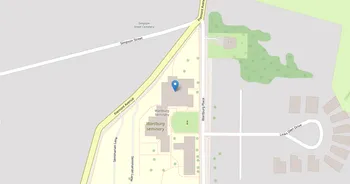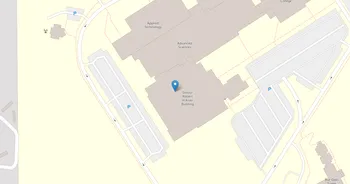Waldorf University : Overview, Courses, Scholarships & Rankings
About Waldorf University
Tucked into North Iowa, Waldorf University blends a liberal-arts core with practical, career-focused study. It's known for personal attention and discussion-heavy classes. Academic life revolves around labs, studios, performance spaces, and a library that feels lived in. Students lean on advising, tutoring, counseling, and a busy career office. Residence halls, dining spots, and a light-filled fitness center shape the day-to-day.
Campus life runs lively for a small place. There's athletics, music and theater, student government, service groups, and intramurals. And when the weather cooperates, trails and nearby lakes pull people outside. The vibe is welcoming, rooted in Midwestern hospitality and a tradition of service. Career prep comes through internships and alumni ties across the region. Forest City adds a walkable downtown, community events, and connections to area employers.
Key Institutional Details
Contact & Profile
Academic & Institutional
Academic Programs & Fields of Study
Waldorf University offers 30 degree programs across 15 major academic fields, graduating approximately 918 students annually. The most popular fields by graduate volume are Business (6 programs, 303 graduates), Security & Safety (6 programs, 226 graduates), Eng. Technologies (1 programs, 148 graduates), Psychology (1 programs, 77 graduates) and Education (4 programs, 55 graduates). Explore program details, award levels, and graduate demographics below.
Business (6 programs, 303 graduates)
Business Administration, Marketing and Entrepreneurship
| Program Name | Graduates | Gender Distribution | Award Levels | CIP Code |
|---|---|---|---|---|
| Organizational Leadership | 123 |
|
Master's
|
52.0213 |
| Business Administration | 86 |
|
Bachelor's
|
52.0101 |
| Business Administration and Management | 42 |
|
Associate's
Bachelor's
Master's
|
52.0201 |
| Organizational Behavior | 39 |
|
Bachelor's
|
52.1003 |
| Human Resources Management | 10 |
|
Associate's
|
52.1001 |
| Business Communications | 3 |
|
Associate's
|
52.0501 |
Security & Safety (6 programs, 226 graduates)
Emergency Management, Law Enforcement and Public Safety
| Program Name | Graduates | Gender Distribution | Award Levels | CIP Code |
|---|---|---|---|---|
| Crisis and Emergency Management | 71 |
|
Associate's
Bachelor's
|
43.0302 |
| Fire Services Administration | 64 |
|
Associate's
Bachelor's
|
43.0202 |
| Critical Infrastructure Protection | 41 |
|
Bachelor's
|
43.0303 |
| Criminal Justice and Safety Studies | 32 |
|
Associate's
Bachelor's
|
43.0104 |
| Homeland Security | 17 |
|
Associate's
Bachelor's
|
43.0301 |
| Criminal Justice Administration | 1 |
|
Bachelor's
|
43.0103 |
Eng. Technologies (1 programs, 148 graduates)
Applied Engineering Technologies and Technical Support
| Program Name | Graduates | Gender Distribution | Award Levels | CIP Code |
|---|---|---|---|---|
| Occupational Safety and Health Technology | 148 |
|
Associate's
Bachelor's
Other Award
|
15.0701 |
Psychology (1 programs, 77 graduates)
Psychological Sciences, Mental Health and Behavioral Studies
| Program Name | Graduates | Gender Distribution | Award Levels | CIP Code |
|---|---|---|---|---|
| General Psychology | 77 |
|
Associate's
Bachelor's
|
42.0101 |
Education (4 programs, 55 graduates)
Educational Sciences, Teaching Methods and Pedagogy
| Program Name | Graduates | Gender Distribution | Award Levels | CIP Code |
|---|---|---|---|---|
| Adult and Continuing Education | 24 |
|
Master's
|
13.1201 |
| Elementary Education | 17 |
|
Bachelor's
|
13.1202 |
| Early Childhood Education | 8 |
|
Associate's
|
13.1210 |
| Instructional Technology | 6 |
|
Master's
|
13.0501 |
Health (1 programs, 42 graduates)
Healthcare Professions, Medical Sciences and Clinical Practice
| Program Name | Graduates | Gender Distribution | Award Levels | CIP Code |
|---|---|---|---|---|
| Health Administration and Management | 42 |
|
Associate's
Bachelor's
Master's
|
51.0701 |
Kinesiology (1 programs, 18 graduates)
Exercise Science, Sports Medicine and Physical Recreation
| Program Name | Graduates | Gender Distribution | Award Levels | CIP Code |
|---|---|---|---|---|
| Sport and Fitness Management | 18 |
|
Associate's
Bachelor's
|
31.0504 |
Human Sciences (1 programs, 16 graduates)
Family Studies, Consumer Sciences and Human Development
| Program Name | Graduates | Gender Distribution | Award Levels | CIP Code |
|---|---|---|---|---|
| Foods, Nutrition, and Wellness Studies | 16 |
|
Bachelor's
|
19.0501 |
Communication (2 programs, 12 graduates)
Media Communications, Journalism and Public Relations
| Program Name | Graduates | Gender Distribution | Award Levels | CIP Code |
|---|---|---|---|---|
| Speech Communication and Rhetoric | 11 |
|
Associate's
Bachelor's
|
09.0101 |
| Public Relations and Advertising | 1 |
|
Bachelor's
|
09.0900 |
History (1 programs, 6 graduates)
Historical Studies, Cultural Heritage and Archaeological Research
| Program Name | Graduates | Gender Distribution | Award Levels | CIP Code |
|---|---|---|---|---|
| History | 6 |
|
Bachelor's
|
54.0101 |
Admission Requirements & Test Scores
Comprehensive overview of admission criteria, standardized test score ranges, and application requirements for prospective students at Waldorf University.
Application Requirements
Data based on IPEDS for 2022-2023 academic year. Test score ranges represent the middle 50% of admitted students (25th-75th percentile). Requirements may vary by program.
Tuition, Fees & Estimated Costs
Overview of tuition rates, housing, and other annual education expenses for undergraduate and graduate students
Financial Aid & Student Support
Summary of scholarships, grants, student loans, and financial aid statistics for undergraduate students
Student Success Metrics
Graduation rates and post-graduation earnings to help assess student outcomes and long-term value of education.
Loan Burden & Repayment Outcomes
Breakdown of loan repayment rates and student debt levels by income and dependency status.
Frequently Asked Questions
Find answers to the most common questions about Waldorf University
How much does it cost to attend Waldorf University?
The annual tuition at Waldorf University is $25,220 for in-state students. When including room and board, books, and other expenses, the total estimated cost is approximately $39,966 for in-state students. Additional costs include room and board $9,448 and books and supplies $1,578.
Data based on IPEDS program completions for 2022-2023 academic year. Tuition and cost estimates are approximate and may not include all fees, personal expenses, or transportation costs.
What academic programs and degree levels does Waldorf University offer?
Waldorf University offers 30 academic programs across 15 major fields of study, with available degree levels: Associate's, Bachelor's, Master's, Other Award.
Most popular program areas include:
- Business Administration, Marketing and Entrepreneurship (6 programs)
- Emergency Management, Law Enforcement and Public Safety (6 programs)
- Applied Engineering Technologies and Technical Support (1 programs)
- Psychological Sciences, Mental Health and Behavioral Studies (1 programs)
- Educational Sciences, Teaching Methods and Pedagogy (4 programs)
Data based on IPEDS program completions for 2023-2024 academic year. Numbers reflect programs where students graduated, not all offered programs.
What is the acceptance rate for Waldorf University?
Waldorf University has an 72.6% acceptance rate and a 24% yield rate, making it selective.
Admission statistics breakdown:
- Total applicants: 1,033
- Students admitted: 750
- Students enrolled: 180
Data based on IPEDS for 2022-2023 academic year. Admission statistics may vary by program and application cycle.
What financial aid and scholarships are available at Waldorf University?
Waldorf University provides financial aid to 7% of first-time, full-time students, with average grants of $16,542 and average loans of $5,547.
Average financial aid amounts by type:
- Pell grants: $4,925
- State/Local grants: $2,730
- Institutional grants: $13,471
- Federal loans: $5,062
The university supports 141 students with grants and 118 students with loans annually.
Data based on IPEDS for 2022-2023 academic year. Financial aid amounts and percentages may vary by program, enrollment status, and individual circumstances.
What is the average salary for Waldorf University graduates?
Waldorf University graduates earn a median salary of $50,515 after 6 years and $51,165 after 10 years.
The salary range 10 years after graduation spans from $31,771 (25th percentile) to $79,077 (75th percentile).
Data based on IPEDS for 2022-2023 academic year. Salary data reflects graduates who received federal financial aid (approximately 60% of all graduates). Actual earnings may vary significantly based on program, location, and individual circumstances.
Related Universities




Found something useful? Help others discover it too! Share with friends, on social media, or save for later - every share helps someone find the information they need.